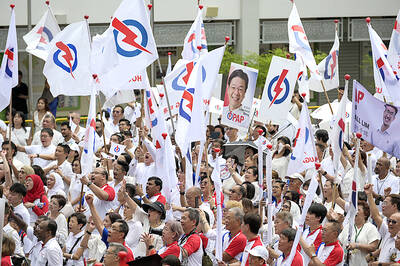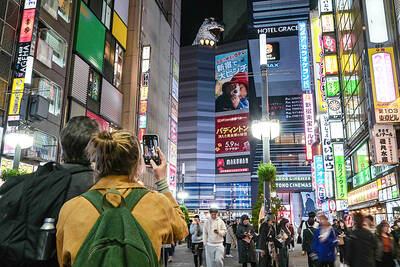Women in Bangladesh and Vietnam making clothes for the A$23 billion (US$16.47 billion) Australian fashion industry are going hungry because of wages as low as A$0.51 an hour, an Oxfam report has found.
The aid group interviewed 470 garment workers employed at factories supplying brands such as Big W, Kmart, Target and Cotton On, and found 100 percent of surveyed workers in Bangladesh and 74 percent in Vietnam could not make ends meet.
“The investigation has uncovered the widespread payment of poverty wages and the impact this is having on the lives of the workers, mainly women, making the clothes Australians love to wear,” Oxfam Australia chief executive Helen Szoke said.
“Women who are unable to get treatment when they fall sick, workers who cannot afford to send their children to school, families that cannot make their pay stretch to put enough food on the table, people sleeping on floors in overcrowded houses, spiraling debts, mothers separated from their children — these are just some of the common realities of the failure of big brands to ensure the payment of living wages,” she said.
Nine out of 10 workers interviewed in Bangladesh said they could not afford enough food for themselves and their families and were forced to skip meals or go into debt.
In the same country 72 percent of workers interviewed could not afford medical treatment, compared with 53 percent in Vietnam.
In Bangladesh, one in three workers interviewed was separated from their children because of inadequate income.
The Made in Poverty report details the plight of a Bangladeshi 21-year-old single mother, Tania, who works up to 12 hours a day in a factory supplying clothes to brands including Kmart and earns A$169 a month, or about A$0.55 an hour.
She was forced to send her baby back to her village to be cared for by her parents and sees her daughter only twice a year.
Another worker profiled, Chameli, earns about A$0.51 an hour for her work as a helper in a factory in Bangladesh that supplies clothes to brands including Big W.
Her family cannot afford to send her three daughters to school and the eldest, aged 14, has also started working in a garment factory.
The family of five live in a crowded compound on the outskirts of Dhaka in a 3.6m by 2.4m room, where the two youngest girls sleep on the floor.
Deloitte Access Economics estimates that on average just 4 percent of the price of a piece of clothing sold in Australia goes towards the wages of the workers who made it.
Oxfam said if brands absorbed the cost of paying a living wage, it would amount to less than 1 percent of the garment price.
The research found practices by Australian companies were contributing to driving wages down.
“They undertake fierce price negotiation, often jump between contracts instead of working with factories over the long term, squeeze lead times for orders and operate with a separation between their ethical and standards staff and their buying teams, who negotiate directly with factories,” the report said.
“One factory owner even reported the extensive measures a company had taken to keep their clothing safe in case of a fire, but a lack of interest from the very same company in fire safety measures for the workspaces where people sew their clothes,” it said.
Szoke said Oxfam was not advocating boycotts of brands, but encouraged shoppers to contact fashion retailers via social media to demand living wages for garment workers.

POLITICAL PRISONERS VS DEPORTEES: Venezuela’s prosecutor’s office slammed the call by El Salvador’s leader, accusing him of crimes against humanity Salvadoran President Nayib Bukele on Sunday proposed carrying out a prisoner swap with Venezuela, suggesting he would exchange Venezuelan deportees from the US his government has kept imprisoned for what he called “political prisoners” in Venezuela. In a post on X, directed at Venezuelan President Nicolas Maduro, Bukele listed off a number of family members of high-level opposition figures in Venezuela, journalists and activists detained during the South American government’s electoral crackdown last year. “The only reason they are imprisoned is for having opposed you and your electoral fraud,” he wrote to Maduro. “However, I want to propose a humanitarian agreement that

ECONOMIC WORRIES: The ruling PAP faces voters amid concerns that the city-state faces the possibility of a recession and job losses amid Washington’s tariffs Singapore yesterday finalized contestants for its general election on Saturday next week, with the ruling People’s Action Party (PAP) fielding 32 new candidates in the biggest refresh of the party that has ruled the city-state since independence in 1965. The move follows a pledge by Singaporean Prime Minister Lawrence Wong (黃循財), who took office last year and assumed the PAP leadership, to “bring in new blood, new ideas and new energy” to steer the country of 6 million people. His latest shake-up beats that of predecessors Lee Hsien Loong (李顯龍) and Goh Chok Tong (吳作棟), who replaced 24 and 11 politicians respectively

Young women standing idly around a park in Tokyo’s west suggest that a giant statue of Godzilla is not the only attraction for a record number of foreign tourists. Their faces lit by the cold glow of their phones, the women lining Okubo Park are evidence that sex tourism has developed as a dark flipside to the bustling Kabukicho nightlife district. Increasing numbers of foreign men are flocking to the area after seeing videos on social media. One of the women said that the area near Kabukicho, where Godzilla rumbles and belches smoke atop a cinema, has become a “real

Archeologists in Peru on Thursday said they found the 5,000-year-old remains of a noblewoman at the sacred city of Caral, revealing the important role played by women in the oldest center of civilization in the Americas. “What has been discovered corresponds to a woman who apparently had elevated status, an elite woman,” archeologist David Palomino said. The mummy was found in Aspero, a sacred site within the city of Caral that was a garbage dump for more than 30 years until becoming an archeological site in the 1990s. Palomino said the carefully preserved remains, dating to 3,000BC, contained skin, part of the